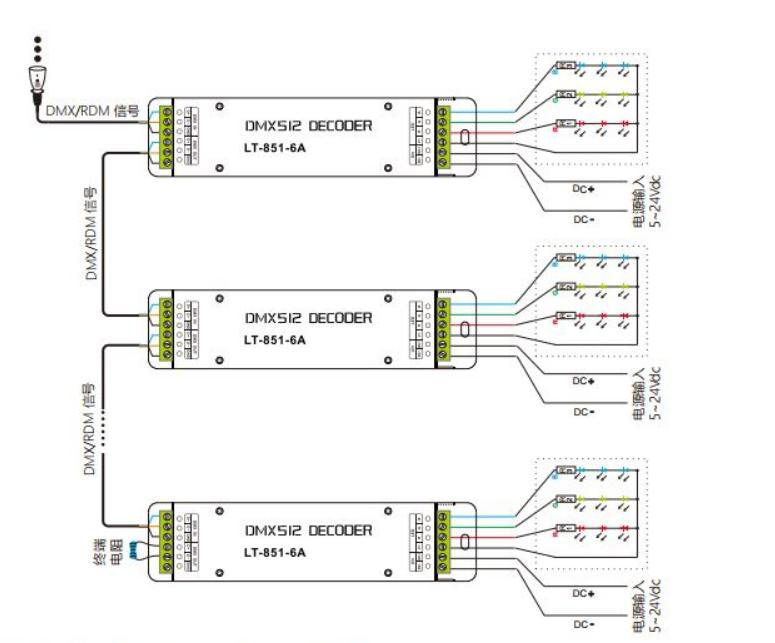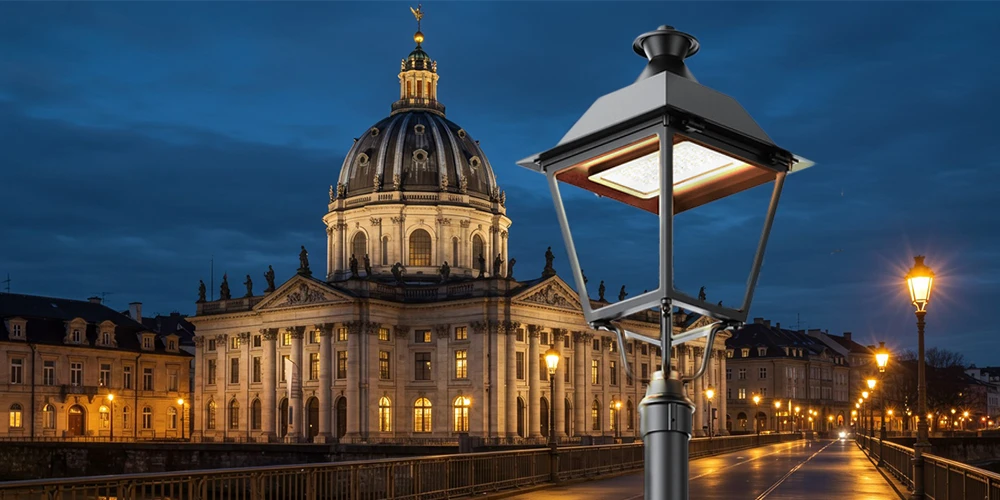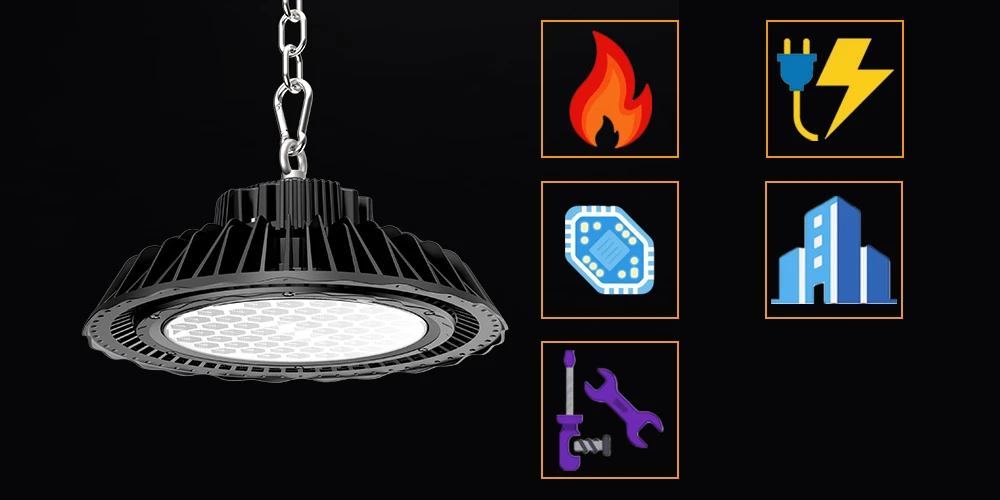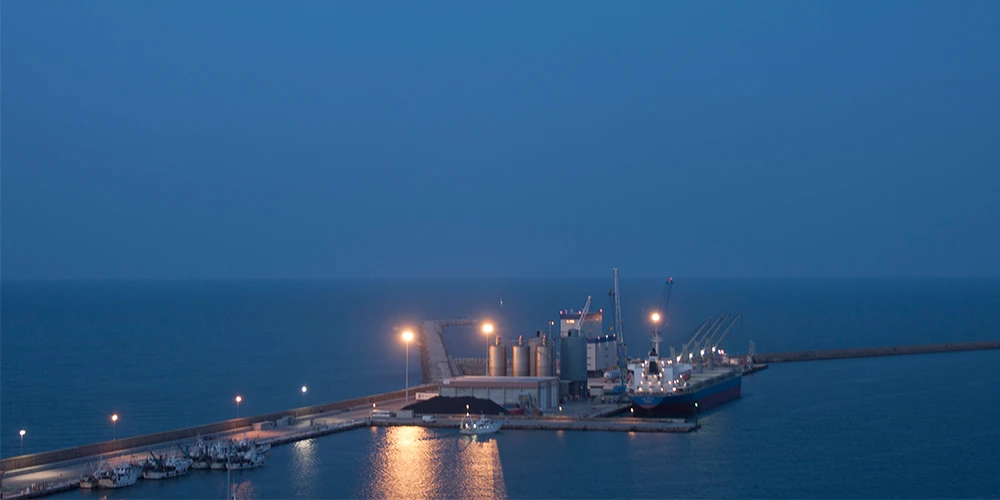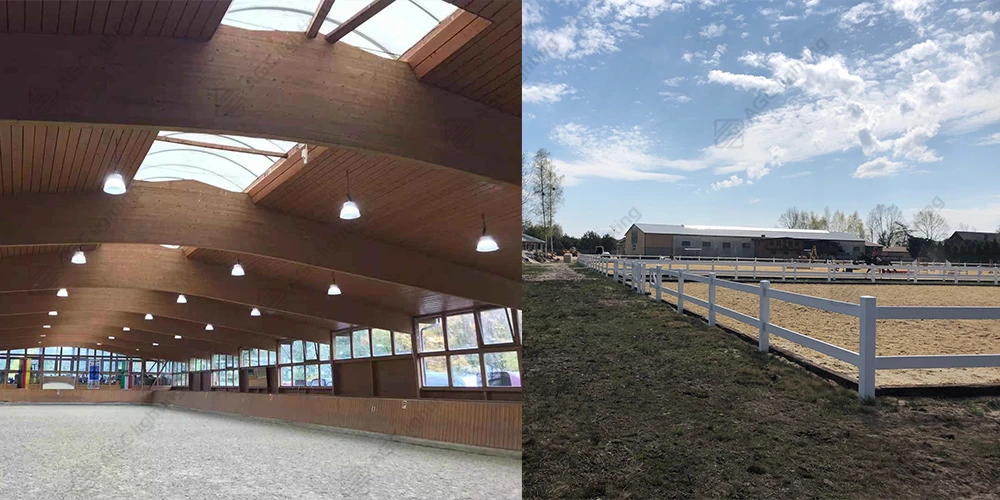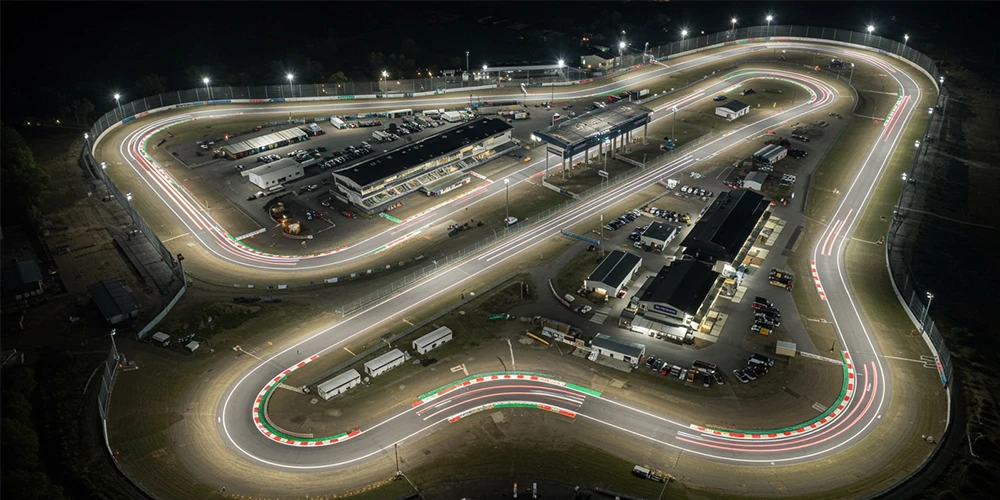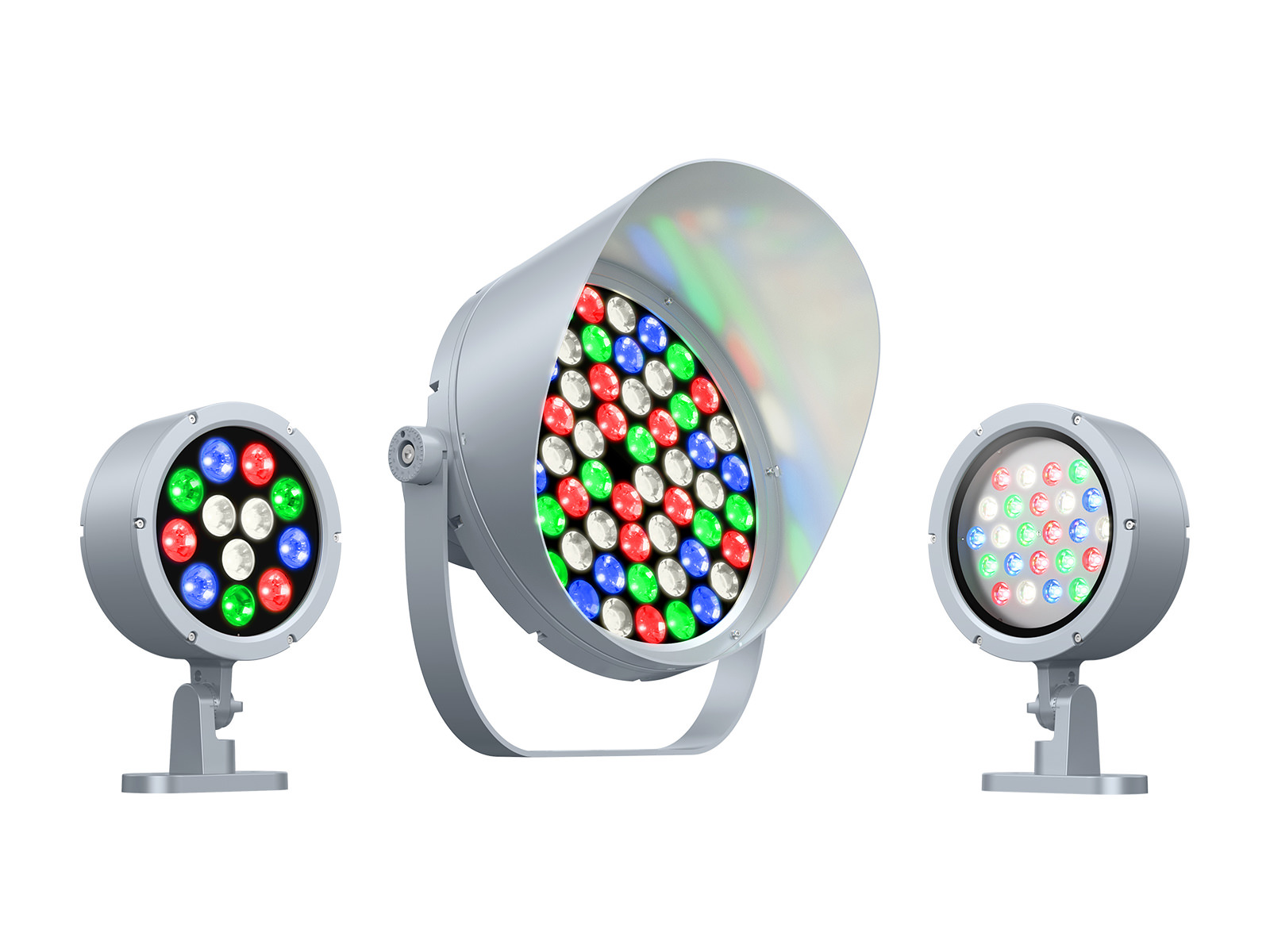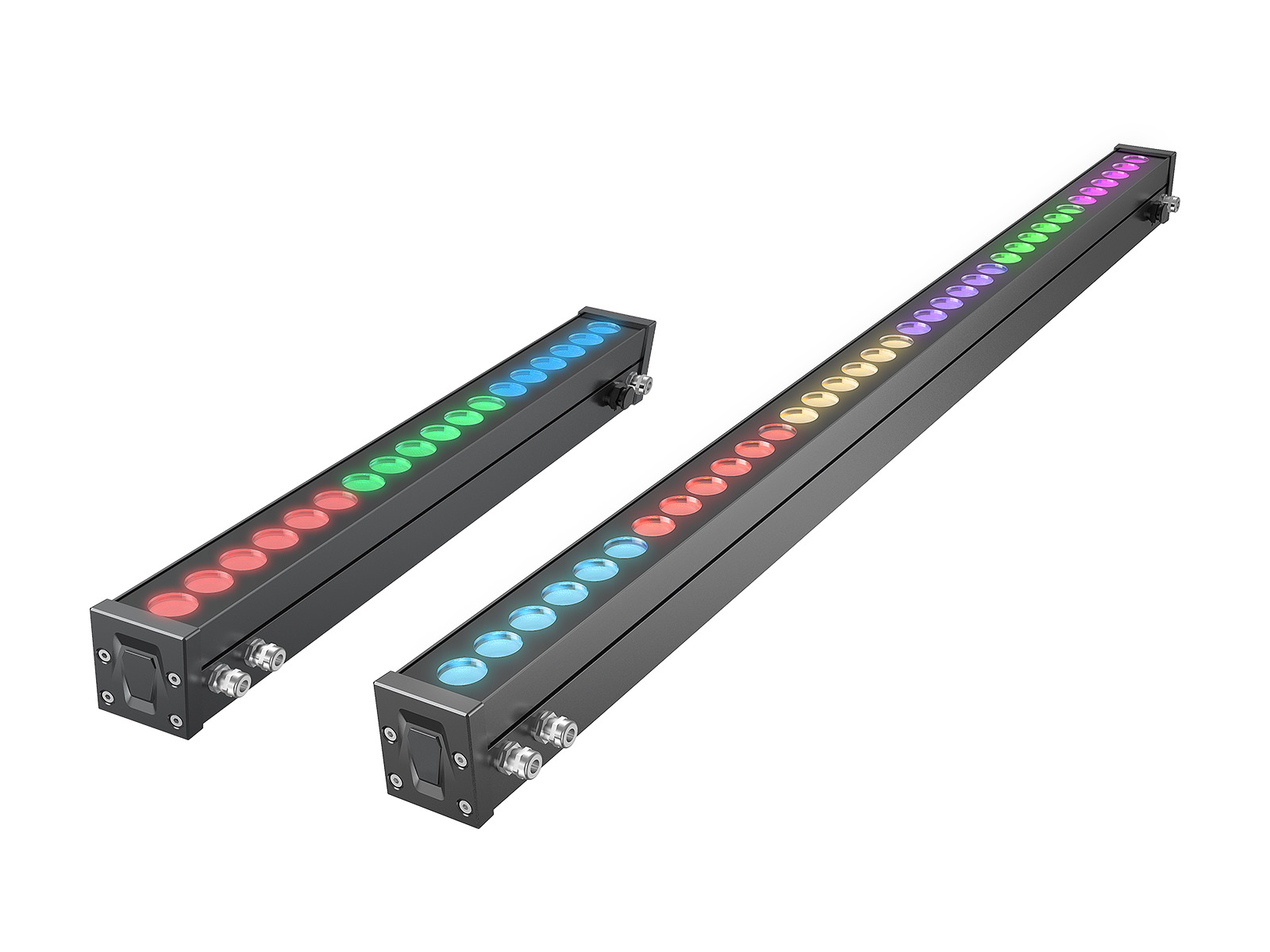With the market's preference for RGB luminaires, AGC has also launched several RGB fixtures, such as the FL39 and FL56. So, today we're going to explore the application of DMX512 in RGB luminaires.
- Common lighting controls in lighting fixture
- What is DMX512?
- DMX512 Notes
- Common problems and solutions in engineering commissioning
- 1. The entire control circuit lamps flashing uncontrolled, how to do?
- 2. A control circuit for individual lamps flashing uncontrolled
- 3. When is it necessary to add a signal amplifier?
- 4. How many nodes can the output port of the splitter with an amplifier take?
- 5. Can the signal still be transmitted without the shielding of the signal cable?
- 6. What if the DMX loops are not synchronized with each other in time?
- 7. Will the synchronization be affected by the reduced transmission rate?
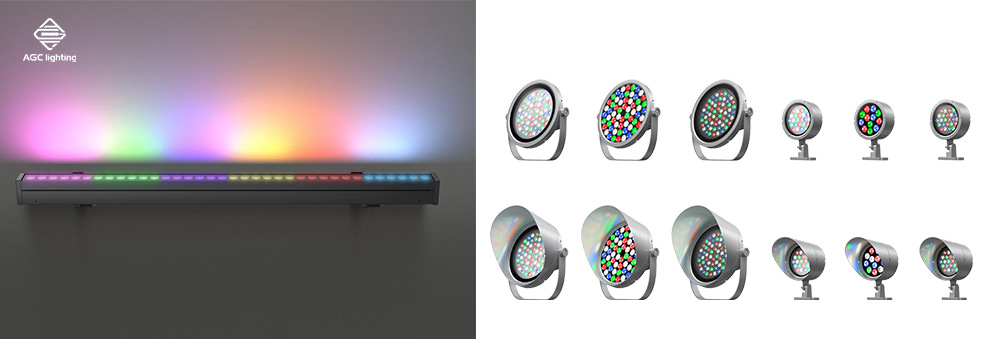
Common lighting controls in lighting fixture
*ON/OFF
This is the simplest and most common type of control: on/off, turning lights on/off, which is also the way home appliances are switched on/off.
*Thyristor
China's domestic use of a dimming method has the advantage that there is no need to lay signal lines, the cost is relatively low, and the quality of the electrician also requires less.
*0~10V
0~10V is also a control signal, used to control the power supply part of the lamp so that the lamp can accept 0~10V signal. Simply put, this means adjusting the brightness by adjusting the voltage. For example, at 0V, the power output is zero, and at 10V, the lamp can output 100% brightness.
*DALI
The DALI system is mainly used as a control system for hotel and interior lighting. Its most important feature is that individual luminaires have individual addresses and can be precisely dimmed and controlled by the DALI system for single lamps or groups of lamps.
*DMX512
DMX512 is mainly used for stage lighting and outdoor lighting.
Specific forms of control are: WiFi, infrared sensor, remote control, human body induction, etc.
In the following, I will share more information with you about DMX512.
What is DMX512?
DMX512 is a Digital Multiplex with 512 pieces of information (multiplex digital transmission).
DMX512 protocol was first developed by the USITT (United States Theatre Technology Association) to become a standard digital interface from the console to control the way the dimmer worked.
With DALI for the performance of static effects, it is just the opposite: DMX512 is mainly used to show the dynamic effects of the illuminated object, and DMX control of the light is to give the impression that it is always changing, mainly in color, suitable for rendering the atmosphere, so generally used in landscape lighting and stage lighting.
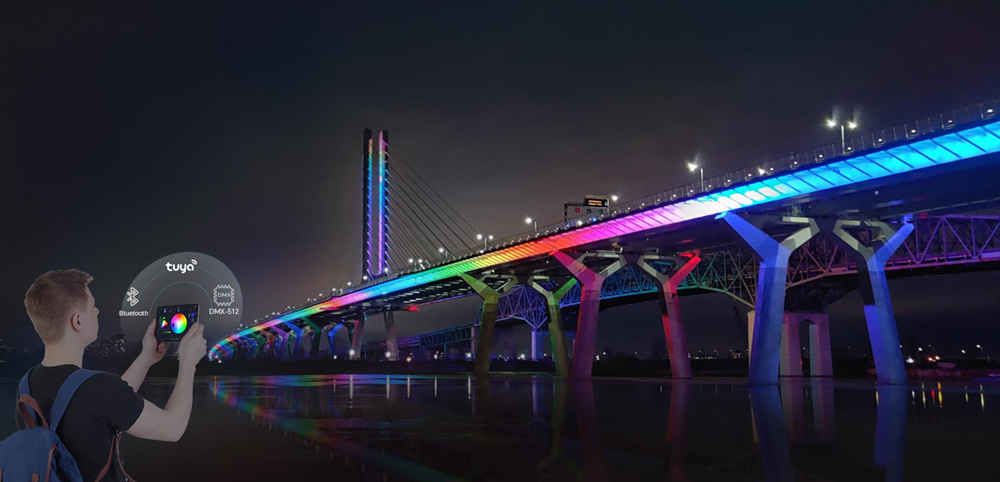
DMX512 control system schematic: a number of RGB luminaires, each fixture contains a DMX module inside; the module in the case of power supply and controller signals received at the same time, will drive the LED beads light and dark changes so as to adjust the color changes.
Features of DMX512
- Supports up to 512 channels per output loop.
- Each output loop supports up to 512 channels, and the maximum number of devices per port is determined by the number of channels occupied by the individual devices.
- Single pixel luminaire connection diagram
As an example, the output loop is the general, the communications are the soldiers, and the equipment is the quarters. Headquarters states that each general can command a maximum of 512 soldiers, which determines how many quarters each general has jurisdiction over based on the number of soldiers each quarter holds.
So how many fixtures can a DMX512 port carry? How are the channels calculated?
Single Color: 512
RGBW: 512/4=128
RGB: 512/3=170(around)
Standard EIA485 interface
The wiring method is a bus-type topology and does not support ring or star networks. Up to 32 nodes can be connected on the same bus.

Various shapes of structures, DMX512 to follow the first bus structure, with headers and tails.
Transmission rate: 250 Kbps
Bit rate refers to the number of bits (bit) transmitted per second, bps (Bit Per Second). Baud rate and construction specifications are closely related; a high baud rate signals have relatively poor anti-interference ability.
DMX512 Notes
- In practice, it is not enough to understand the characteristics of the DMX512, in order to avoid engineering accidents, we also need to remember the following 5 points of caution.
- The transmission distance of a Super Category 5 network cable does not exceed 100 meters.
- Use of fiber optics for distances between controllers exceeding 100 meters.
- The EIA485 protocol specifies that the number of nodes per repeater does not exceed 32
- The wiring of each control loop must follow the bus structure layout.
- Signal lines and power lines should be laid in separate pipes.
Common problems and solutions in engineering commissioning
1. The entire control circuit lamps flashing uncontrolled, how to do?
Confirm that the controller signal output is normal.
When it appears that the entire control circuit is not controlled by the luminaire, if available, first test the circuit separately with a temporary controller to see if it is.
- Controlled - There is a problem with the original controller signal output (or wiring file problem, or port hardware problem, or port wiring problem).
- Uncontrolled - continue to troubleshoot.
- Disconnect the lights after the first fixture and test the first light alone to determine whether it is a controller problem or the impact of signal interference from the fixture behind it.
Troubleshoot faulty nodes or luminaires
In the case of normal controller signal output, slowly increase the number of lamps and lanterns to find out the nodes or lamps that lead to an abnormal circuit signal, usually using the "dichotomous method" more quickly.
2. A control circuit for individual lamps flashing uncontrolled
First, verify that the controller wiring is in place.
The number of lights laid out in the controller's wiring file should be consistent with the number of fixtures installed on site.
Then, test with a full cloth line file
The test program is first used to perform a control test, which means that the single-port wiring file is laid out from 1 to 512 channel counts.
- The flashing lamps are controlled. At this time, the circuit lamps rewrite the code, the problem can be solved.
- Individual lamps and lanterns are still not controlled; test whether the signal output of the uncontrolled lamps and lanterns are wired correctly or the lamps and lanterns themselves have quality problems
3. When is it necessary to add a signal amplifier?
One role of the signal amplifier is signal amplification, to restore the weakened signal to the starting strength; another role is signal isolation, to prevent damage to the controller by lamp failure.
As a standard, an additional signal amplifier is required for every 32 nodes according to the EIA485 protocol. This is to avoid weak signals of the luminaires on rainy days or in other conditions, which may cause the luminaires to flash indiscriminately.
More than 32 DMX decoders connected need a signal amplifier; signal amplification can not be more than 5 times in a row. When the signal line is long or the quality of the wire and other reasons caused by the signal recoil effect affect the use, you can try to connect a 0.25W 90-120Ω terminal resistor to the signal terminal of the DMX decoder or power supply at the end of each signal line to solve.
4. How many nodes can the output port of the splitter with an amplifier take?
In the current EIA485 protocol, it is generally recommended to add one amplifier for every 32 nodes. However, in practice, it is possible to have more than 60 nodes, but there is a security risk of signal instability.
We generally recommend that customers increase the number of DMX to over 32, which is very important.
5. Can the signal still be transmitted without the shielding of the signal cable?
Many domestic projects are used for the signal line and basically are not shielded. The transmission distance will certainly be discounted, but it depends on the specific project to be used in the final decision. The farthest distance can generally reach about 100m.
So we will advise customers to go with the DMX signal line, which is best to use shielded twisted signal cable.
6. What if the DMX loops are not synchronized with each other in time?
If the same divider has several different ports, some of the individual port output signals will have a significant delay, and what needs to be done is to reset the parameters of the controller. The most likely reason for this condition is that the controller's own parameters cause the output frequency of each port to be different, thus causing the signal output of each port to be out of sync.
7. Will the synchronization be affected by the reduced transmission rate?
The transmission rate of DMX512 is 250Kbps, which can not be reduced; if the transmission rate is reduced, it is a different system. Another system will have another set of protocols, and there will be no impact on the synchronization of the lamps.
Attached image for DMX connection schematic:
